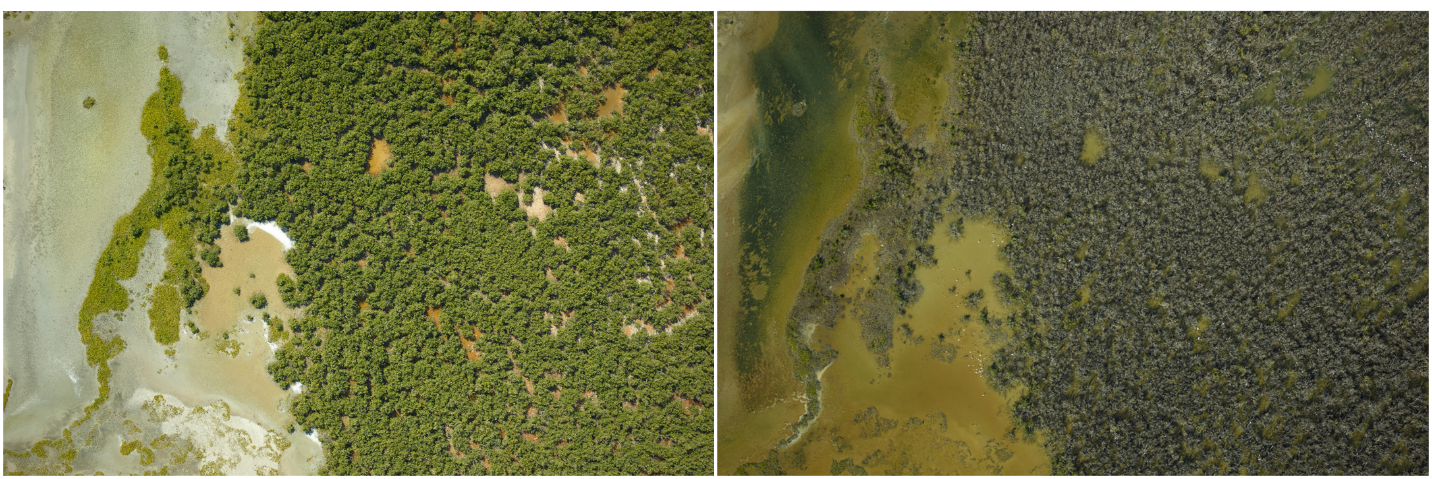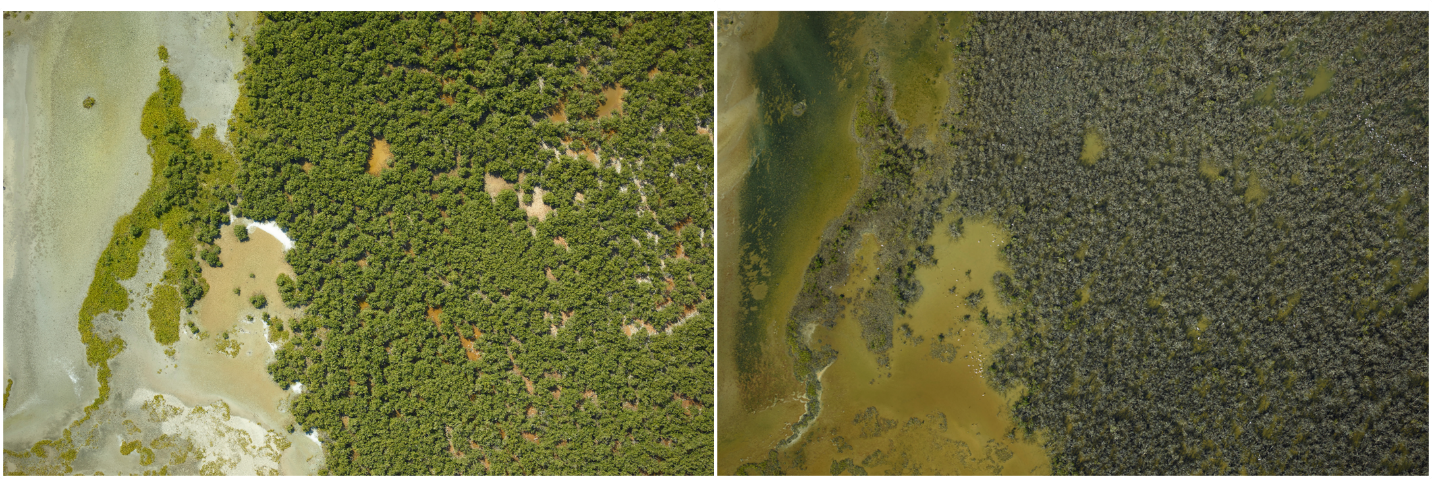
Mangroves are often the first natural line of defense against the intense winds and storm surge during hurricanes. As the hurricane comes ashore, winds are slowed because of the drag across the tall dense mangrove forest canopy and storm and the wave energy is dissipated by the intricate network of stems and prop roots. Dr. David Lagomasino (Assistant Research Professor) is working with NASA (Drs. Lola Fatoyinbo, Bruce Cook, Douglas Morton) and research institutions in South Florida to measure the changes in forest structure following Hurricane Irma.
Hurricane Irma made landfall in the Florida Keys as a category 4 hurricane on September XXX and continued northward making landfall a second time on the mainland in Ft. Myers before continuing over the Florida peninsula. The hurricane generated a 3 meter storm surge accompanied by 110 mph winds along the southwest coast of Florida which houses the largest expanse of mangrove forests in the Caribbean.
Having the mangrove forests along the coast can help to reduce surface winds and attenuate wave energy by over 50%. If mangroves did not exist around the world, there would be an estimated $82 billion dollars of expected damages per year and over 18 million more people affected by flooded. For the US only, there is an estimated $13 billion dollars per year in development and infrastructure that are protected by mangrove forests.
The infrequent, but regular, impacts from catastrophic storms, like Hurricane Irma, are important events that impact the development and evolution of these coastal systems. But in addition to the impacts from catastrophic storms, the coastal wetlands in Florida (as well as in other tropical regions around the world) are also being squeezed by in all directions by human developments, urban expansion, and rising seas. The intensity of these interactions have acute and chronic impacts on both the natural and human landscapes along the coast. The shrinking of natural coastal habitats provide less protection against strong storms, while also allowing more salt water to move inland which ultimately effects the available freshwater resources that metropolitan areas in Florida rely so heavily on.
Click here to read the full article!


